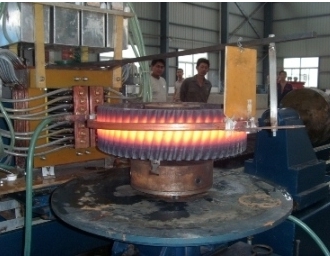- 13
- Nov
Is there any difference between high frequency induction hardening and medium frequency induction hardening?
Is there any difference between high frequency induction hardening and medium frequency induction hardening?
1. Explain the depth of the hard layer of high and medium frequency quenching
Intermediate frequency quenching: deep hardened layer (3~5mm), suitable for parts that bear torsion and pressure load, such as crankshafts, large gears, grinding machine spindles, etc. (The materials used are 45 steel, 40cr, 9Mn2v and ductile high-frequency quenching The surface layer can be hardened in a short time! The crystal structure is very fine! The structure deformation is small, and the surface stress of the medium frequency is smaller than the high frequency. The surface stress is 50HZ called power frequency, and the heating depth is 5-10 1000-10000HZ called intermediate frequency.
High-frequency quenching: shallow hardened layer (1.5~2mm), high hardness, workpiece is not easy to oxidize, small deformation, good quenching quality, high production efficiency, suitable for parts that work under friction conditions, such as generally small gears and shafts (The material used is No. 45 steel, 40cr. Above 10000HZ is called high frequency quenching.
2. Explain the principle of high frequency quenching
High-frequency quenching is mostly used for surface quenching of industrial metal parts. It is a metal heat treatment method that generates a certain induction current on the surface of the workpiece to quickly heat the surface of the part, and then quench it quickly. The workpiece is placed in the inductor, which is generally a hollow copper tube with intermediate frequency or high frequency alternating current (1000-300000Hz or higher). The alternating magnetic field generates an induced current of the same frequency in the workpiece. The distribution of this induced current on the workpiece is uneven. It is strong on the surface but weak on the inside. It is close to 0 at the heart. Use this skin effect. , The surface of the workpiece can be heated quickly, and the surface temperature will rise to 800-1000℃ within a few seconds, while the temperature of the core will increase very little.
Intermediate frequency quenching is to put metal parts in an induction coil, and the induction coil is energized with alternating current to generate an alternating electromagnetic field, which induces an alternating current in the metal parts.

